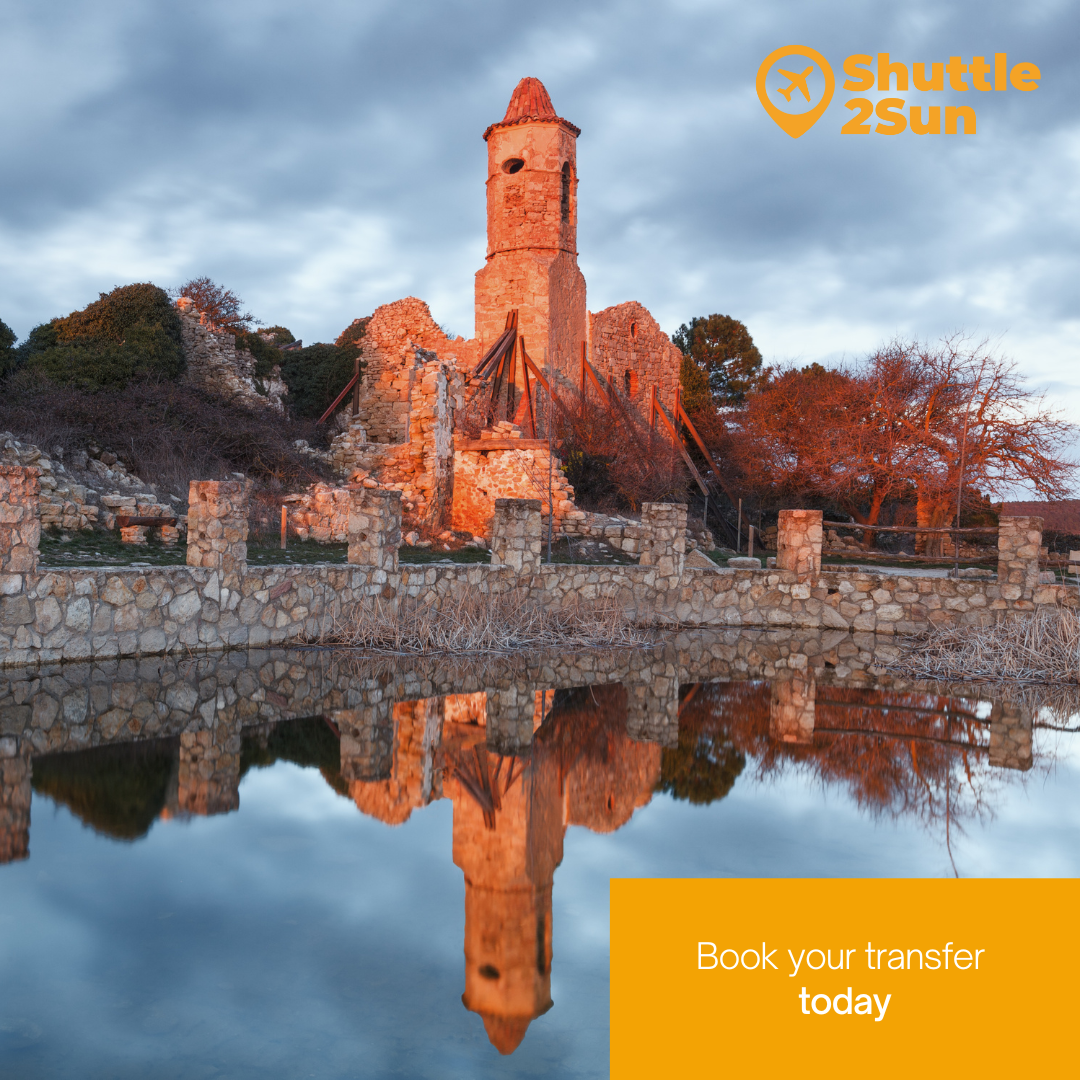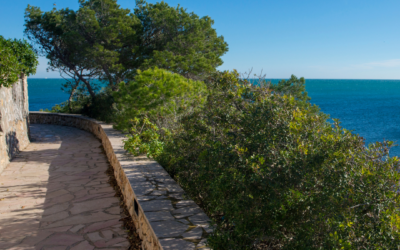The abandoned village of La Mussara, located in the heart of the Prades mountains, in the well-known Costa Daurada region, is one of the most enigmatic and fascinating places in Catalonia. Its ruins, shrouded in mystery, attract hikers, explorers and the curious who want to learn more about this town, whose history and legends have generated an almost mystical aura. Situated more than 1,000 metres above sea level, it offers spectacular views of the coast and a unique natural landscape, which, together with the remains of its buildings, creates an atmosphere of desolation and attraction at the same time.
This ancient village, abandoned since the middle of the 20th century, is made up of ruined buildings including a church, stone houses and paths that today are only reminders of a past life. In addition to the legends, La Mussara is a popular spot for hiking enthusiasts, as its routes through the Prades mountains offer a perfect combination of nature and mystery.
If you want to know, first hand, this abandoned village, we recommend you the shared transfer services and private transfer services, low-cost and sustainable, that Shuttle2Sun offers, to get to the towns of Costa Dorada, from Barcelona airport, Barcelona port, Reus airport, Girona airport and Camp de Tarragona AVE train station. Remember that you can book your transfer up to 24 hours in advance.
History of La Mussara
The history of La Mussara is full of mystery and tragedy. Located in the Baix Camp region, this small village was abandoned in 1961, when it was annexed to the municipality of Vilaplana. Depopulation began much earlier, due to the harsh living conditions: lack of access to drinking water, electricity, telephone and medical care were some of the main factors that led the inhabitants to leave. Residents used to travel to Reus, a few kilometres away, to run errands and stock up on supplies, which was not enough to keep the village alive.
It is believed that the origin of La Mussara dates back to the Bronze Age, although the first written references date back to the Muslim occupation. It appears, in writing, for the first time, in the population charter of King Alfonso I to the archbishop of Tarragona, in 1173. Two centuries later, this village became part of the county of Prades, created by King James II of Aragon.
The Church of Sant Salvador
The Church of San Salvador is one of the few remains still standing of the abandoned village of La Mussara and the most representative of its period of splendour. Built in the 12th century, this temple was the religious centre of the town. Today, what remains of it are the ruins of its structure, with the 1959 bell tower as the main visible element that remains standing, resisting the passage of time.

Over the centuries, the church underwent modifications and repairs, especially in the 18th century, when part of its structure was renovated to adapt it to the needs of the inhabitants of the time. Even so, the original Gothic building can still be appreciated.
Nowadays, the ruins of the Church of Sant Salvador are a point of interest for hikers and curious visitors to La Mussara, not only for their historical value, but also for the mystical air that surrounds the place.
The Xalet de les Airasses
Another of the buildings still standing in La Mussara is the Xalet de les Airasses, located at the highest point of the village, one of the most emblematic buildings in the area. Built in 1926 by the Centre Excursionista de Catalunya as a mountain refuge, it was designed by the architect Domènec Sugrañes i Gras, a disciple of Antoni Gaudí. This single-storey building, measuring some 40 m² and 2.5 metres high, had two distinct rooms: a dining area and kitchen, and another with bunk beds and basic services for the hikers who visited it.

The Xalet was intended to provide a comfortable refuge for hikers walking in the Prades Mountains, offering a place to rest and a natural viewpoint with spectacular views over the Baix Camp and the coastline of Costa Daurada.
Although the refuge was in active use for several years, the abandonment of the village of La Mussara in the 1960s contributed to its degradation, and today only the ruins of the original building remain.
The Xalet de les Airasses is also famous for the views it offers from the Punta de les Airasses, a place where fog is frequent, giving the surroundings an even more mysterious aspect.
Over time, the refuge has become part of the legends and the enigmatic halo that surrounds La Mussara, attracting both hikers and the curious interested in the history and mysteries of the place.
Legends and mysteries
The climate and the location of this small abandoned village have also contributed to the creation of an aura of mystery surrounding La Mussara.
The fog that often envelops the place has given rise to many legends and tales of paranormal phenomena. Among the most disturbing tales are unexplained disappearances and strange sounds that some visitors claim to have heard while exploring the ruins.
One of the places where these phenomena have been reported most frequently is the Church of San Salvador, where satanic paintings have been found inside the church, fuelling legends of occult rituals carried out there. Moreover, on some occasions, visitors claim to have heard bells coming from this temple, even though it has been in ruins for decades.
One of the best known legends is that of the ‘door to another dimension’, which is said to be found in this village. There are accounts of people claiming to have seen hikers mysteriously disappear after crossing a particular point in the village, only never to be seen again. This story has fuelled the popular belief that La Mussara is a place of transit between worlds, which has attracted both the curious and investigators of paranormal phenomena.
Remember that you have at your disposal Shuttle2Sun‘s shared transfer services and private transfer services, low-cost and sustainable, to reach the towns of Costa Dorada, from Barcelona airport, Barcelona port, Reus airport, Girona airport and Camp de Tarragona AVE train station. Remember that you can book your transfer up to 24 hours in advance.



